Birth name John Alvin Ray Years active 1951–1989 Instruments Vocals, piano Role Singer | Occupation(s) Singer, songwriter Name Johnnie Ray Genres Traditional pop Labels Okeh, Columbia | |
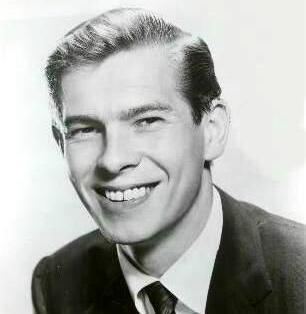 | ||
Born January 10, 1927Hopewell, Oregon, United States ( 1927-01-10 ) Died February 24, 1990, Los Angeles, California, United States Movies There's No Business Like Show Business, Rogue's Gallery Similar People | ||
Johnnie ray interview
John Alvin Ray (January 10, 1927 – February 24, 1990) was an American singer, songwriter, and pianist. Extremely popular for most of the 1950s, Ray has been cited by critics as a major precursor to what would become rock and roll, for his jazz and blues-influenced music and his animated stage personality. Tony Bennett called Ray the "father of rock and roll," and historians have noted him as a pioneering figure in the development of the genre.
Contents
- Johnnie ray interview
- What s my line johnnie ray ozzie nelson panel janet blair panel jun 9 1957
- Early life
- Early career and success
- Later career
- Musical influences
- Relationships and sexuality
- Health problems
- Death
- Legacy
- In popular culture
- Studio albums
- Live albums
- Compilations
- References
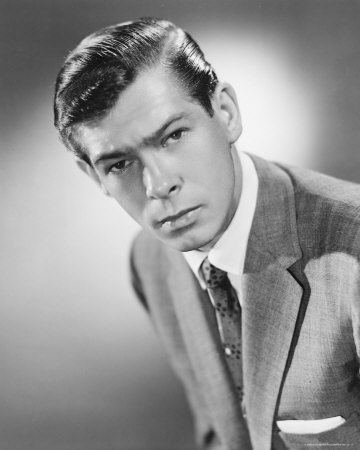
Raised in Oregon, Ray, who was partially deaf, began singing professionally at age fifteen on Portland radio stations. He would later gain a local following singing at small, predominantly African-American nightclubs in Detroit, where he was discovered in 1951 and subsequently signed to Columbia Records. He rose quickly from obscurity in the United States with the release of his debut album, Johnnie Ray (1952), as well as with a 78 rpm single, both of whose sides reached the Billboard magazine's Top Hot 100 songs of 1952: "Cry" and "The Little White Cloud That Cried".
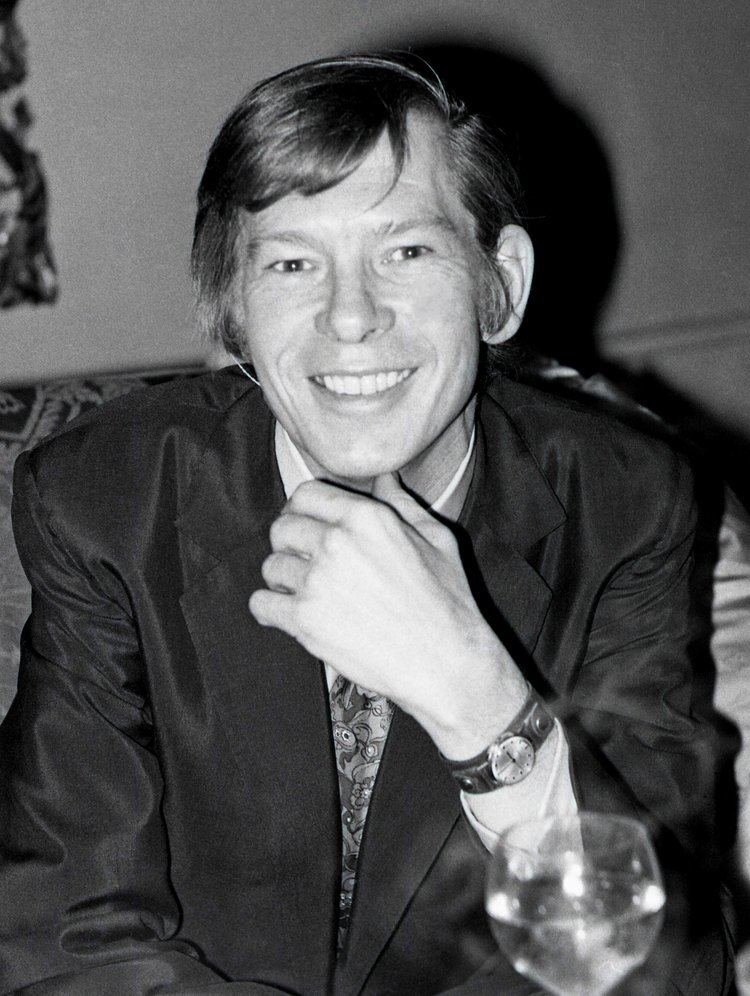
In 1954, Ray made his first and only major motion picture, There's No Business Like Show Business, in which he, Ethel Merman, Marilyn Monroe and others were part of an ensemble cast. His career in his native United States began to decline in 1957, and his American record label dropped him in 1960. He never regained a strong following there and rarely appeared on American television after 1973. His fanbases in the United Kingdom and Australia, however, remained strong until his death in 1990 of complications from liver failure.
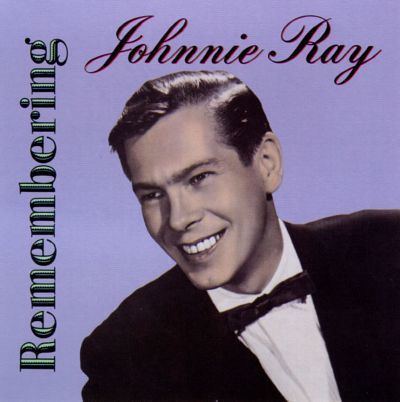
British Hit Singles & Albums noted that Ray was "a sensation in the 1950s, the heart-wrenching vocal delivery of "Cry" ... influenced many acts including Elvis and was the prime target for teen hysteria in the pre-Presley days." Ray's dramatic stage performances and melancholic songs have been credited by music historians as precursory to later performers, ranging from Leonard Cohen to Morrissey.
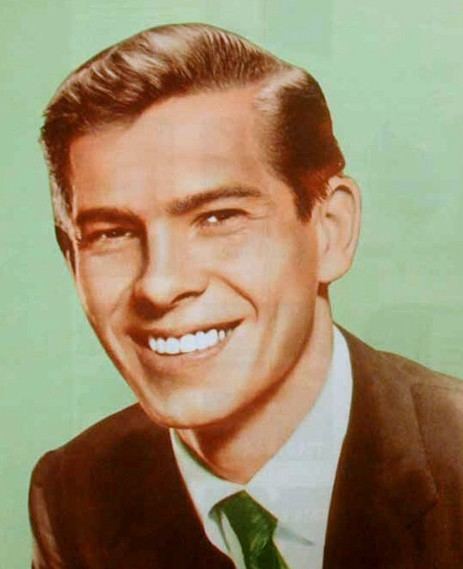
What s my line johnnie ray ozzie nelson panel janet blair panel jun 9 1957
Early life
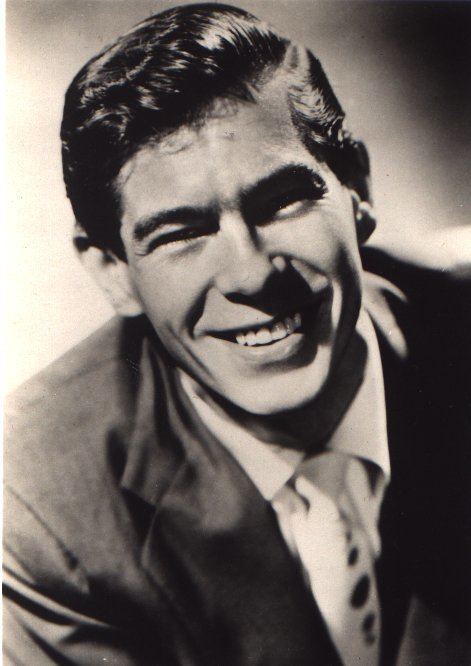
Johnnie Ray was born January 10, 1927, in Dallas, Oregon, to parents Elmer and Hazel (née Simkins) Ray. Along with older sister Elma, Ray spent part of his childhood on a farm and attended grade school in Dallas. Ray began playing the piano at age three, and beginning at age twelve, sang in the local church choir. After the United States entered World War II, the family moved to Portland, Oregon, where Ray attended Franklin High School.
At age thirteen, Ray became deaf in his left ear following a mishap that occurred during a Boy Scout ritual called a "blanket toss." In later years, Ray performed wearing a hearing aid. Surgery performed in 1958 left him almost completely deaf in both ears, although hearing aids helped his condition. Ray credited his deafness as pivotal to his career and performance style saying: "My need for sincerity traces back to when I was a child and lost my hearing. I became withdrawn. I had an emotional need to develop a relationship to other people." After graduating high school, Ray worked as a soda jerk, bus boy, and as a mill worker in Salem, Oregon. In the interim, he did jobs playing piano at clubs in Salem and Portland.
Early career and success
Inspired by rhythm singers like Kay Starr, LaVern Baker and Ivory Joe Hunter, Ray developed a unique rhythm-based singing style, described as alternating between pre-rock R&B and a more conventional classic pop approach. He began singing professionally on a Portland, Oregon, radio station at age 15, sharing billing with Jane Powell, then a local young singer herself.
He later performed in comedy shows and theatrical productions in Seattle, Washington, before relocating to Detroit, Michigan. In Detroit, Ray would regularly perform at the Flame Showbar, an African American nightclub, where he developed a local following. While performing at the Flame Showbar, Ray attracted the attention of Bernie Lang, a song plugger, who saw him perform with local DJ, Robin Seymour of WKMH. Lang went to New York to sell the singer to Danny Kessler of the Okeh label, a subsidiary of Columbia Records. Kessler came over from New York, and he, Lang and Seymour went to the Flame. According to Seymour, Kessler's reaction was, "Well, I don't know. This kid looks well on the stand, but he will never go on records."
It was Seymour and Lowell Worley of the local office of Columbia who persuaded Kessler to have a test record made of Ray. Worley arranged for a record to be cut at the United Sound Studios in Detroit. Seymour told reporter Dick Osgood that there was a verbal agreement that he would be cut in on the three-way deal in the management of Ray. But the deal mysteriously evaporated, and so did Seymour's friendship with Kessler.
Ray's first record, the self-penned R&B number for Okeh Records, "Whiskey and Gin," was a minor hit in 1951. The following year he dominated the charts with the double-sided hit single of "Cry" and "The Little White Cloud That Cried". Selling over two million copies of the 78rpm single, Ray's delivery struck a chord with teenagers and he quickly became a teen idol. When executives at Columbia Records, the parent company of Okeh, realized that the Caucasian Ray had developed a fan base of white listeners, he was moved over to the Columbia label.
The live television broadcast of Toast of the Town on January 6, 1952 included the first of his several appearances on the widely seen American program that officially changed its title in 1955 to The Ed Sullivan Show.
Ray's performing style included theatrics later associated with rock and roll, including tearing at his hair, falling to the floor, and crying onstage. Ray quickly earned the nicknames "Mr. Emotion", "The Nabob of Sob", and "The Prince of Wails", and several others.
20th Century Fox capitalized on his stardom by including him in the ensemble cast of the movie There's No Business Like Show Business (1954) alongside Ethel Merman as his mother, Dan Dailey as his father, Donald O'Connor as his brother and Marilyn Monroe as his sister-in-law.
More hit songs followed, including "Please Mr. Sun," "Such a Night," "Walkin' My Baby Back Home," "A Sinner Am I" and "Yes Tonight Josephine." He had a United Kingdom number 1 hit with "Just Walkin' in the Rain" (which Ray initially disliked) during the Christmas season in 1956. He hit again in 1957 with "You Don't Owe Me a Thing," which reached number 10 on the Billboard charts. Though his American popularity was declining in 1957, he remained popular in the United Kingdom, breaking the attendance record at the London Palladium formerly set by fellow Columbia Records artist Frankie Laine. In later years, he retained a loyal fan base overseas, particularly in Australia.
Later career
Ray had a close relationship with journalist and television game show panelist Dorothy Kilgallen. They became acquainted soon after his sudden rise to stardom in the United States. They remained close as his American career declined.
Two months before Kilgallen's death in 1965, her newspaper column plugged Ray's engagements at the Latin Quarter in New York and the Tropicana Resort & Casino in Las Vegas, Nevada. He began his gig at the Latin Quarter immediately after an eight-month vacation in Spain during which he and new manager Bill Franklin had extricated themselves from contracts with Bernie Lang, who had managed Ray from 1951 to 1963. Ray and Franklin believed that a dishonest Lang had been responsible for the end of Ray's stardom in the United States and for large debts that he owed the Internal Revenue Service.
In 1969, Ray headlined a European concert tour with Judy Garland. He served as the best man at her wedding to her last husband, nightclub manager Mickey Deans, in London on March 15, 1969. Denmark and Sweden were among the countries where Ray and Garland performed together; they played Stockholm on March 19.
In the early 1970s, Ray's American career revived to a limited extent, as he had not released a record album or single for more than ten years. He made network television appearances on The Andy Williams Show in 1970 and The Tonight Show Starring Johnny Carson three times during 1972 and 1973. His personal manager Bill Franklin resigned in 1976 and cut off contact with the singer a few years later. His American revival turned out to be short-lived as his career had already begun to decline as the 1980s approached.
In 1981, Ray hired Alan Eichler as his manager and resumed performing with an instrumental trio rather than with the large orchestras he and his audiences had been accustomed to for the first 25 years of his career. When Ray and the trio performed at a New York club called Marty's on Third Avenue and East 73rd Street in 1981, The New York Times stated, "The fact that Mr. Ray, in the years since his first blush of success, has been seen and heard so infrequently in the United States is somewhat ironic because it was his rhythm and blues style of singing that help lay the groundwork for the rock-and-roll that turned Mr. Ray's entertainment world around. Recently, Ringo Starr of the Beatles pointed out that the three singers that the Beatles listened to in their fledgling days were Chuck Berry, Little Richard and Johnnie Ray."
In 1986, Ray appeared as a Los Angeles taxicab driver in Billy Idol's "Don't Need a Gun" video and is name-checked in the lyrics of the song. During this time period, Ray was generally playing small venues in the United States such as Citrus College in Los Angeles County, California. He performed there in 1987 "with a big-band group," according to a Los Angeles Times profile of him during that year. Other appearances included the Dunes Hotel in Las Vegas, Resorts International in Atlantic City and the Vine St. Bar and Grill in Hollywood, where his show was broadcast live by KJAZZ radio. He was also among the notables who helped dedicate Billie Holiday's star on the Hollywood Walk of Fame.
While his popularity continued to wane in the United States, Australian, English and Scottish promoters booked him for large venues as late as 1989, his last year of performing.
Musical influences
Ray was significantly influenced by gospel music and numerous African American singers, specifically Billie Holiday, Little Miss Cornshucks and LaVern Baker, as well as Kay Starr.
Relationships and sexuality
In 1951, prior to Ray's fame, he was arrested in Detroit for accosting and soliciting an undercover vice squad police officer for sex in the restroom of the Stone Theatre, a burlesque house. When he appeared in court, he pleaded guilty to the charges, paid a fine, and was released. Due to his obscurity at the time, Detroit newspapers did not report the story. After his rise to fame the following year, rumors about his sexuality began to spread as a result of the incident.
Despite her knowledge of the solicitation arrest, Marilyn Morrison, daughter of the owner of West Hollywood's Mocambo nightclub, married Ray at the peak of his American fame. The wedding ceremony took place in New York a short time after he gave his first New York concert, which was at the Copacabana. The New York Daily News made the wedding its cover story for May 26, 1952, and it reported that guests included Mayor Vincent R. Impellitteri.
Aware of Ray's sexuality, Morrison told a friend she would "straighten it out." The couple separated in 1953 and divorced in 1954. Several writers have noted that the Ray-Morrison marriage occurred under false pretenses, and that Ray had had a long-term relationship with his manager, Bill Franklin. However, a biography of Ray points out that Franklin was 13 years younger than Ray and that both their personal and business relationships began in 1963, many years after the Ray-Morrison divorce. In a 1953 newspaper interview with James Bacon, Ray blamed rumors about his sexuality for the breakup of his marriage to Morrison.
In 1959, Ray was arrested again in Detroit for soliciting an undercover officer at the Brass Rail, a bar that was described many years later by one biographer as a haven for musicians and by another biographer as a gay bar. Ray went to trial following this second arrest and was found not guilty. Two years after his death, several friends shared with biographer Jonny Whiteside their knowledge that Ray was homosexual.
Health problems
Ray suffered from alcoholism throughout his life, though during the 1950s at the height of his fame, newspaper and magazine pieces about Ray did not disclose the extent of his drinking problem. On September 2, 1952, Ray was arrested in Boston for public intoxication, but was released four hours later. According to biographer Jonny Whiteside, he drank heavily then. In 1960, he was hospitalized for tuberculosis. Shortly after his recovery, he quit drinking, according to Whiteside. His music was not available for sale and he did not appear on American television during the first half of the 1960s. Consequently, American newspapers ran ads for his concerts but reported nothing about his life: marital status, offstage behavior or health issues.
Not until December 1966 did Ray return to American television, and even then it was a program telecast locally in Chicago but not elsewhere: An Evening With Johnnie Ray. Video of this performance was reviewed by Whiteside in the early 1990s, and he wrote in his book that Ray appears emaciated and unhealthy.
In 1969, shortly after Ray returned to the United States from a European tour with Judy Garland, an American doctor informed him that he was well enough to drink an occasional glass of wine. He resumed drinking heavily and his health began to decline. Despite this, in the early 1970s he appeared several times on prime-time network television in the United States. After the offers for television stopped, he continued touring, attracting major media attention outside the United States, until he gave his final concert, a benefit for the Grand Theater in Salem, Oregon, on October 6, 1989.
Death
In early 1990, poor health forced Ray to check into Cedars-Sinai Medical Center near his home in Los Angeles. He was confined there for more than two weeks without the knowledge of journalists or talk radio personalities who had interviewed him in various countries throughout the 1980s. On February 24, 1990, he died of hepatic encephalopathy resulting from liver failure at Cedars-Sinai. Kay Starr was among those who spoke at a public memorial service held at Forest Lawn Hollywood Hills. He is buried at Hopewell Cemetery near Hopewell, Oregon, in a grave plot alongside his mother, father, and sister.
For his contribution to the recording industry, Johnnie Ray was honored with a star in 1960 on the Hollywood Walk of Fame at 6201 Hollywood Boulevard.
In 1999, Bear Family Records issued two five-CD sets of his entire body of work, each containing an 84-page book on his career. Companies including Sony and Collectables have kept his large catalogue of recordings in continual release worldwide.
Legacy
Music journalist Robert A Rodriguez noted Ray's contemporary obscurity in his 2006 book The 1950s' Most Wanted: The Top 10 Book of Rock & Roll Rebels, Cold War Crises, and All American Oddities, writing:
Though barely remembered today, to the fifties record buying public Ray was something of a former-day Leonard Cohen or a Morrissey, creating a body of work that was the very definition of depressionfest. With titles like "What's the Use", "Oh, What a Sad, Sad Day", and "Here I Am Broken Hearted", coupled with a stage show that was as emotionally draining as a revival meeting, Ray dominated the pre-rock & roll charts.
Scholar Cheryl Herr notes the impact of Ray's deafness on his unique performing style and vocals, writing: "[Ray was] a singer whose hearing range appears literally to have defined the contour of his performance, the nature of his short-lived popularity, and his enduring iconic status in pre-rock and proto-rock."
In popular culture
Archival footage of Ray arriving at London Heathrow Airport in 1954 was featured in the 1982 music video for Dexys Midnight Runners' single "Come On Eileen". The lyrics of the song also mention him: "Poor old Johnnie Ray sounded sad upon the radio/He moved a million hearts in mono."
Ray is mentioned in the lyric of Billy Idol's 1986 hit "Don't Need a Gun" and appears with him in the video.
Ray is one of the cultural touchstones mentioned in the first verse (concerning events from the late 1940s and early 1950s) of Billy Joel's 1989 hit single "We Didn't Start the Fire", between Red China and South Pacific.
Ray was name-checked by Van Morrison in his duet with Tom Jones titled "Sometimes We Cry" that was released in 1997.
Ray was also referred to in two classic Eartha Kitt songs, "Monotonous (song)" from "New Faces of 1952" (I even made Johnnie Ray smile for me) and "I Want to Be Evil" (I want to sing songs like the guy who cries).
